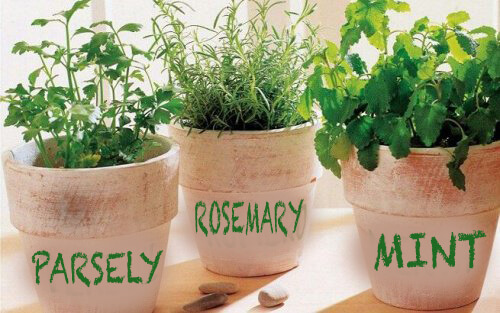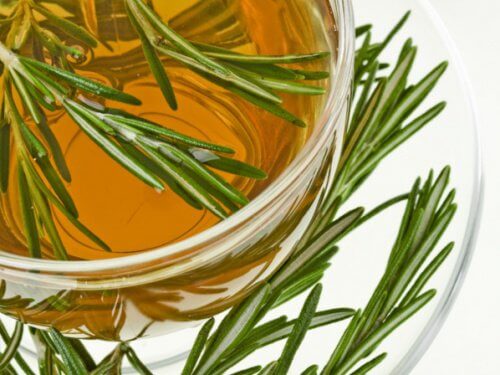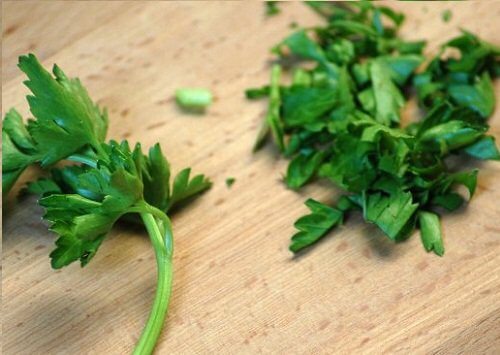How to Grow Rosemary, Parsley, and Mint at Home

Herbs like rosemary, parsley, and mint are well adapted to a wide variety of soils and climatic conditions. Thus, they’re easy to grow at home. In today’s article, we want to show you how to grow rosemary, parsley, and mint at home so you’ll always have a fresh supply of these herbs.
These three herbs can be used at any time in the kitchen and they also have multiple medicinal applications.
How to grow rosemary at home

Discover: The Easiest Ideas for Creating a Garden
You’ll need:
- Rosemary cuttings or seeds
- Pots
- Soil
- A shovel
- Water
Instructions
- Take a few four-inch long cuttings. If possible, it’s best to cut them during the summertime.
- If you don’t have rosemary cuttings available, you can also purchase seeds.
- Fill a small pot with potting soil, making sure you have good drainage at the bottom for excess water.
- Place the cuttings in the soil and store the pot in a very sunny area.
- Another option is to plant rosemary in a garden because it adapts to any type of soil.
- Rosemary is an aromatic herb, so it prefers drier soils. Avoid watering it too much.
How to grow parsley at home

- Parsley seeds
- Potting soil
- Pots
- Water
Instructions
- The first thing you need to do is find a place in your home where you get between four and six hours of sunlight every day. Parsley needs a lot of sun and it’s difficult to grow without it.
- Fill the pot with potting soil, leaving an inch or two open at the top, and plant the parsley seeds. You can plant them at any time of the year, but it’s best to avoid exposing the seedlings to excessive heat or cold.
- Note that the germination process is a little slow. It’s normal to wait several days before the seedlings emerge.
- Ensure that the pot has good drainage so you avoid drowning the plant.
- To keep your parsley compact and tender, don’t let it flower. It’s best to remove the flowers any time they bud. You can also use those flowers and seeds to grow more parsley.
How to grow mint at home

Read more here: Discover the Multiple Health Properties of Mint Tea
You’ll need:
- Cuttings or mint seeds
- Pots
- Potting soil
Directions
- The easiest way to plant mint is by using the cuttings from another plant. You can also plant from seeds, however.
- Mint grows horizontally, so it’s best to use a larger pot that’s approximately 10 inches deep.
- Ensure that the pot has good drainage to remove excess water.
- Fill the pot with enough potting soil, preferably high in nutrients.
- Plant the seeds or mint cuttings.
- Although mint does require some sunlight, you should place the plant where it can enjoy plenty of shade.
- It’s important to water this plant on a regular basis, as it prefers slightly moist soil.
We hope you found this information on how to grow rosemary, parsley, and mint useful!
All cited sources were thoroughly reviewed by our team to ensure their quality, reliability, currency, and validity. The bibliography of this article was considered reliable and of academic or scientific accuracy.
- de Oliveira JR, Camargo SEA, de Oliveira LD. Rosmarinus officinalis L. (rosemary) as therapeutic and prophylactic agent. J Biomed Sci. 2019;26(1):5. Published 2019 Jan 9. doi:10.1186/s12929-019-0499-8
- Farzaei, M. H., Abbasabadi, Z., Ardekani, M. R. S., Rahimi, R., & Farzaei, F. (2013, December). Parsley: a review of ethnopharmacology, phytochemistry and biological activities. Journal of Traditional Chinese Medicine. https://doi.org/10.1016/s0254-6272(14)60018-2
- Mikaili P, Mojaverrostami S, Moloudizargari M, Aghajanshakeri S. Pharmacological and therapeutic effects of Mentha Longifolia L. and its main constituent, menthol. Anc Sci Life. 2013;33(2):131–138. doi:10.4103/0257-7941.139059
This text is provided for informational purposes only and does not replace consultation with a professional. If in doubt, consult your specialist.








